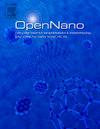Sunlight-active Bi2O2(OH)(NO3)-AgBr photocatalyst for degradation of Rhodamine B (RhB) dye and disinfection of E. coli bacteria
Q2 Pharmacology, Toxicology and Pharmaceutics
引用次数: 0
Abstract
A sunlight-driven Bi2O2(OH)(NO3)-AgBr heterostructure photocatalyst (denoted as BiON-AgBr) was synthesized by a two-step route combining hydrothermal and chemical precipitation methods. Firstly, the pristine BiON was prepared, via two types of solvent, by using a hydrothermal method. In the case that water was used as a solvent, the BiON.W photocatalyst with a pine-like structure was obtained. However, by using mixed solvent (comprising ethanol: water of 20:80), the BiON.M photocatalyst with a flower-like morphology was achieved. Secondly, the binary BiON-AgBr heterostructure was then constructed using a chemical precipitation technique. Accordingly, the photocatalytic performance of the prepared BiON-AgBr photocatalyst was evaluated through the photodegradation of Rhodamine B (RhB) dye under natural sunlight irradiation. The synthesized BiON-AgBr photocatalyst still exhibits high photocatalytic efficiency, even after three consecutive cycles of use. Trapping experiment revealed that the superoxide anion radicals (•O₂⁻) play the most important role in RhB removal. The result suggested a Z-scheme mechanism based on AgBr/Ag/BiON. The formation of metallic silver (Ag0), upon sunlight illumination, was proved as the evidence shown in the XRD pattern of the used photocatalyst. The synergistic effect of the Z-scheme heterojunction and the surface plasmon resonance (SPR) of silver metal results in the considerable enhancement of the sunlight-driven photodegradation of RhB dye and the remarkable improvement of the disinfection of E. coli bacteria.
光活性Bi2O2(OH)(NO3)-AgBr光催化剂对罗丹明B (RhB)染料的降解及对大肠杆菌的消毒
采用水热法和化学沉淀法相结合的两步法合成了一种光能驱动Bi2O2(OH)(NO3)-AgBr异质结构光催化剂(BiON-AgBr)。首先,采用水热法制备了两种溶剂的原始BiON。在水被用作溶剂的情况下,BiON。得到了具有松状结构的W光催化剂。然而,通过使用混合溶剂(包括乙醇:水20:80),BiON。获得了具有花状形貌的M型光催化剂。其次,利用化学沉淀法构建BiON-AgBr二元异质结构。因此,通过在自然日光照射下光降解罗丹明B (Rhodamine B, RhB)染料来评价所制备的BiON-AgBr光催化剂的光催化性能。合成的BiON-AgBr光催化剂在连续使用三次后仍具有较高的光催化效率。诱捕实验表明,超氧阴离子自由基(•O₂⁻)在RhB的清除中起着最重要的作用。结果提示了一种基于AgBr/Ag/BiON的Z-scheme机制。在阳光照射下,金属银(Ag0)的形成在所用光催化剂的XRD图中得到了证明。由于金属银的z型异质结与表面等离子体共振(SPR)的协同作用,使得RhB染料在日光下的光降解能力显著增强,对大肠杆菌的消毒效果显著提高。
本文章由计算机程序翻译,如有差异,请以英文原文为准。
求助全文
约1分钟内获得全文
求助全文
来源期刊

OpenNano
Medicine-Pharmacology (medical)
CiteScore
4.10
自引率
0.00%
发文量
63
审稿时长
50 days
期刊介绍:
OpenNano is an internationally peer-reviewed and open access journal publishing high-quality review articles and original research papers on the burgeoning area of nanopharmaceutics and nanosized delivery systems for drugs, genes, and imaging agents. The Journal publishes basic, translational and clinical research as well as methodological papers and aims to bring together chemists, biochemists, cell biologists, material scientists, pharmaceutical scientists, pharmacologists, clinicians and all others working in this exciting and challenging area.
 求助内容:
求助内容: 应助结果提醒方式:
应助结果提醒方式:


